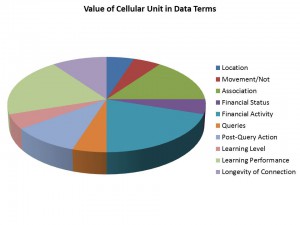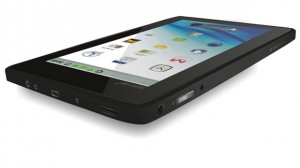
Slide: Cellular Value Chart
Phi Beta Iota: Open Source Everything (OSE) begins with OpenBTS (Base Transceiver Station, i.e. a hand-held cell phone).
See Also:

Slide: Cellular Value Chart
Phi Beta Iota: Open Source Everything (OSE) begins with OpenBTS (Base Transceiver Station, i.e. a hand-held cell phone).
See Also:

Tesla technologies can revolutionize communications as we know them today. here is demonstrated one example where it outperforms standard electro-magnetic or transverse wave propagation.
A German Electrical Engineer operating under the pseudonym TheOldScientist demonstrates the existence of Longitudinal/Scalar Waves. Classical Electromagnetic-Waves are Transverse and can be shielded through the use of a Faraday Cage. L/S Waves on the other hand bypass all manner of barriers, and have been shown to propagate at superluminal speeds as well. Proper utilization of S/L Waves can open up broad vistas for communications technologies as well as eliminate electro-smog (a byproduct of unharnessed scalar-pollution currently produced by traditional EM-technologies).
See Also:
![]() The $10 cell phone has arrived – and with it, economic opportunity
The $10 cell phone has arrived – and with it, economic opportunity
By Channtal Fleischfresser | March 18, 2013, 3:10 AM PDT
On a recent trip to Shenzhen, China, a group of MIT students discovered that you can buy a cell phone there for as little as $10. While the cost of mobile phones has continued to decrease over time, the fact that you can buy a gadget that can make phone calls and send text messages (and has a working battery) for that price is pretty astonishing. The head of MIT’s Media Lab, Joi Ito, reckons that these are likely the world’s cheapest phones.
A $10 price tag means that virtually anyone in the world can afford a mobile phone. Moreover, in parts of the world where basic phones are still more predominant than the “smart” variety gaining steam in the developed world, local infrastructure makes these gadgets more powerful than even smartphones in rich countries.
In Kenya, more than 30 percent of its GDP is fueled by M-Pesa, a mobile payments system that operates via text message. (See a video about M-Pesa here.) Though they may make life easier, smartphones in developed countries have not yet become anywhere near as important to driving economic growth.
Despite the rapid proliferation of smartphones in many countries, basic mobile phones still account for the majority of those used around the world. And given the tremendous economic possibilities for mobile payment systems to create economic growth, perhaps the most basic, cheapest cell phone might make it the world’s most useful.
Continue reading “SmartPlanet: The $10 Cell Phone Has Arrived….Plus Open Cell Meta-RECAP”

A starting point for the new Secretaries of State and Defense.
by Gareth Evans
Gareth Evans, Australia’s foreign minister for eight years and President Emeritus of the International Crisis Group, is currently Chancellor of the Australian National University and co-chair of the Global Center for the Responsibility to Protect. As Foreign Minister, he was at the forefront of recasting Australia’s relationship with China, India, and Indonesia, while deepening its alliance with the US, and helped found the APEC and ASEAN security forums. He also played a leading role in bringing peace to Cambodia and negotiating the International Convention on Chemical Weapons, and is the principal framer of the United Nations’ “responsibility to protect” doctrine.
Project Syndicate, 27 December 2012
CANBERRA – If we were hoping for peace in our time, 2012 did not deliver it. Conflict grew ever bloodier in Syria, continued to grind on in Afghanistan, and flared up periodically in West, Central, and East Africa. There were multiple episodes of ethnic, sectarian, and politically motivated violence in Myanmar (Burma), South Asia, and around the Middle East. Tensions between China and its neighbors have escalated in the South China Sea, and between China and Japan in the East China Sea. Concerns about North Korea’s and Iran’s nuclear programs remain unresolved.
Continue reading “John Steiner: THE GLOBAL MARCH TOWARD PEACE by Gareth Evans*”
![]() The world’s cheapest tablet, improved (and reviewed)
The world’s cheapest tablet, improved (and reviewed)
By Betwa Sharma | December 31, 2012,

DELHI — In 2012, SmartPlanet reported on a series of inexpensive tablets from India especially the $41 one called Aakash, which was launched by the Indian government.
Datawind Inc., a Montreal-based tech company, made the tablet in response to the Indian government’s challenge to create the world’s cheapest tablet.
Aakash, which was further subsidized for students to $35, received bad reviews. Critics said it had poor battery life, an unresponsive screen, absence of useful apps, less storage space and a slow processor.
In November, Datawind relaunched its tablet as Aakash 2. The improved tablet is powered by Android 4.0 Ice Cream Sandwich run on 1 GHz processor and 512 MB RAM with 4 GB internal storage and 32 GB microSD support. Its basic features include 7-inch capacitative touch screen, battery life of three hours, 0.3 megapixel front camera and WiFi connectivity.
The Indian government will buy about 100,000 units from Datawind for Rs. 2263 ($41) and make it available to students for Rs.1130 ($20). The commercial version of the tablet can be bought online for Rs. 4499 ($81)
This time, it was launched not only in India but also unveiled at the United Nations.
“India is a critical player on security issues … but you are also a leader on development and technology,” U.N. Secretary General Ban Ki-moon said at the unveiling in November. “Indeed, India is a superpower on the information superhighway.”
“We need to do more to help all children and young people make the most of the opportunities provided by information and communications technology – especially all those who are still unconnected from the digital revolution,” he added.
SmartPlanet spoke with tech expert Prasnato Roy, editorial adviser at CyberMedia India, on what’s new with the tablet and will it work better.
Read full article with interview.
Phi Beta Iota: Combine with with Open Cloud and Open Spectrum, among other opens, and we create a prosperous world at peace, a world that works for all.
See Also:
21st Century Intelligence Core References 2.8
Owl: $20 Table Storms the World — Four Million Back Ordered
Search: openbts [as of 30 Oct 2012]
SmartPlanet: Mobile Phones Lifting Global Economy

We are on the brink of a fundamental shift in society. As we journey towards the Networked Society we are unlocking the full potential of learning and education. Students and progressive teachers, empowered by technology, are turning established models on their heads while new skills and educational platforms are redefining our systems and institutions.
Contents:
1 A connected world 4
2 From evolution to revolution 5
3 Classroom disruption 6
Breaking down the walls 6
Knowledge everywhere 6
Lifelong learning 7
The empowered classroom 7
4 The science of change 8
5 Making the grade 10
Learning and Education in a Networked Society (PDF 12 Pages)
Phi Beta Iota: An Ericsson document. Most interesting point: mobile traffic expected to grow by fifteen times before 2017. Most absent word: “open.”
See Also:

Infrastructure: The telco industry charges more, kilobyte by kilobyte, for sending a text message from your phone to next door than what it costs to send the same message from Mars to Earth. This is the apex in this series of the dysfunctional telecom market, giving a background to why the telecom industry wants control of the Internet so badly, and is using every conceivable resource to stall, prevent, and delay its resulting economic development.
For the third installment in this series, we focus on text messaging. FoI reader Chris Monteiro suggested that we should describe how it is more expensive to send SMS text messages from your phone, kilobyte by kilobyte, than it is to send the same data from Mars to Earth. That couldn’t possibly be right, we thought, but nobody seemed to have done the math before.
So let’s do the math.